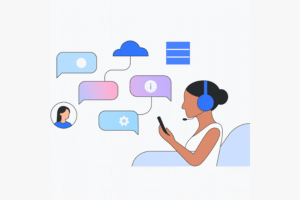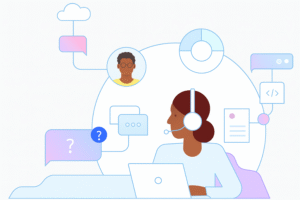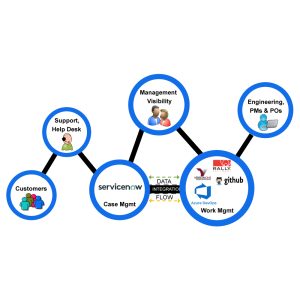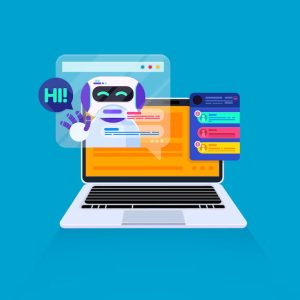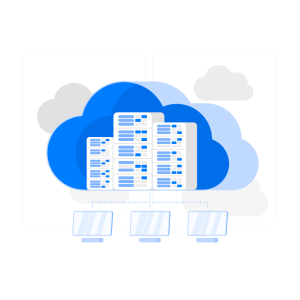The IT landscape is undergoing a seismic shift. Artificial intelligence (AI) is rapidly transforming the way we manage and automate tasks, ushering in a new era of efficiency and productivity. As a long-time observer of the tech industry, I’ve witnessed countless innovations, but the potential of AI in IT automation is truly revolutionary. This rapid adoption is a testament to the immense value that AI brings to the table.
From Manual Drudgery to Intelligent Automation
Traditionally, IT automation relied on pre-programmed scripts and rigid rules. While effective for repetitive tasks, this approach lacked adaptability and couldn’t handle unforeseen situations.
AI injects intelligence into automation. By leveraging machine learning algorithms, AI systems can learn from historical data, identify patterns, and make real-time decisions. This empowers them to automate a broader range of tasks, adapt to changing circumstances, and even predict potential issues before they arise.
Furthermore, AI can continuously learn and improve over time. As it processes more data and interacts with the IT environment, the AI system becomes more adept at handling complex tasks and making even more accurate predictions. This continuous learning loop ensures that your AI-powered automation solution remains effective and efficient in the ever-evolving IT landscape.
Unveiling the Benefits of AI-powered IT Automation
The advantages of implementing AI in IT automation are numerous, impacting both efficiency and human capital. Here’s a closer look:
- Enhanced Efficiency: AI automates complex, time-consuming tasks with unmatched accuracy. Imagine automated server provisioning, infrastructure management, or software deployment“ all handled flawlessly by AI, freeing up valuable IT resources for more strategic initiatives.
- Reduced Errors: Human error is inevitable in manual processes. AI, on the other hand, operates with pinpoint precision, minimizing errors and ensuring consistent outcomes. This translates to fewer disruptions, improved system uptime, and reduced costs associated with troubleshooting.
- Predictive Maintenance: AI analyzes historical data to predict potential equipment failures or system bottlenecks. This proactive approach allows for preventive maintenance, avoiding costly downtime and ensuring optimal system performance.
- Improved Decision-Making: By analyzing vast amounts of data, AI generates actionable insights. IT teams can leverage these insights to make informed decisions about resource allocation, identify areas for improvement, and optimize overall IT operations.
- Empowering IT Staff: AI doesn’t replace IT professionals; it empowers them. By automating mundane tasks, AI frees up IT staff to focus on higher-level functions like strategic planning, security analysis, and innovation.
- Enhanced Scalability: AI-powered automation solutions can easily scale up or down to meet fluctuating IT demands. This allows businesses to respond quickly to changing needs and optimize resource allocation across the IT infrastructure.
- Improved Security Posture: AI can be used to analyze security logs and identify potential threats in real-time. This proactive approach helps businesses mitigate security risks and protect sensitive data.
AI for IT Security: A Guardian in the Digital Age
The integration of AI into IT security goes beyond mere automation. It fosters a proactive approach, enabling security teams to anticipate and counter threats before they inflict damage. By constantly analyzing data and learning from past incidents, AI becomes a vigilant guardian, identifying sophisticated attacks and recommending preventive measures. Here is how AI for IT security helps:
- Enhanced Threat Detection: AI can analyze vast amounts of security data from firewalls, intrusion detection systems, and user activity logs to identify sophisticated cyberattacks in real-time.
- Proactive Risk Mitigation: By learning from historical attack patterns, AI can predict potential security vulnerabilities and recommend preventative measures, such as security policy updates or system hardening.
- Automated Incident Response: AI can automate routine tasks in security incident response, such as threat containment, user notification, and forensic data collection. This allows security teams to focus on investigating complex threats and minimizing damage.
- Continuous Security Monitoring: AI can continuously monitor the IT environment for suspicious activity, even during off-peak hours. This vigilance helps to identify threats before they escalate into major security breaches.
- Adaptive Security Measures: AI-powered security systems can adapt to evolving threats and attacker tactics. They can learn from new attack patterns and adjust security protocols accordingly, ensuring a more robust defense.
Building a Human-AI Collaboration Model for IT Success
By establishing a clear division of labor between humans and AI, organizations can unlock the full potential of this collaborative model. While AI automates repetitive tasks and analyzes vast datasets with unmatched speed and accuracy, human expertise remains invaluable in areas requiring strategic thinking, creativity, and emotional intelligence. Below are the measure how ai build Human-AI collaboration for IT success
- Clearly Defined Roles: It’s crucial to define the roles of human and AI in the IT environment. AI excels at automation and data analysis, while humans contribute strategic thinking, creativity, and emotional intelligence.
- Focus on Human Strengths: Free IT staff from repetitive tasks and empower them to leverage their unique strengths in areas like problem-solving, innovation, and client relationship management.
- Continuous Learning and Development: As AI technology evolves, invest in ongoing training programs for your IT staff to ensure they possess the necessary skills to collaborate effectively with AI tools.
- Clear Communication and Transparency: Maintain open and transparent communication between humans and AI. Humans should understand the rationale behind AI decisions, and AI systems should be able to explain their actions when necessary.
- Building Trust and Confidence: Foster trust and confidence in AI by demonstrating its value and accuracy. This includes setting realistic expectations and addressing any concerns about AI replacing human jobs.
Conclusion
The future of IT automation is undeniably intelligent. By partnering with Nexright, you can leverage the power of AI to transform your IT operations, achieve new levels of efficiency, and empower your IT staff to focus on what matters most“ driving innovation and growth for your business.
Nexright is ready to guide you on this transformative journey. Get in touch with us today to explore how AI-powered IT automation can revolutionize your business.
